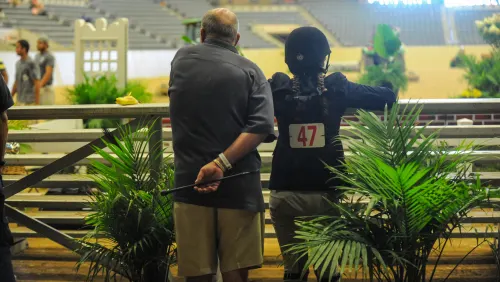When I was searching for my current horse, I made a wish list of attributes I was seeking. Because I was looking for a young horse, I put conformation near the top of the list. When my search finally ended, I was thrilled that the check marks were plentiful.
As I helped prepare my 2-year-old for the hunter breeding ring this year for my first foray into the division, I received a lot of advice. Most people were supportive of the division, but others had stern warnings for me about politics, subjectivity and the “good old boy’s club.”
One comment I regularly heard, though, went something like this: “Be careful what you wish for—horses that do well in the hunter breeding division rarely make it to the performance ring.” I’d heard that statement before but was surprised to see the numbers Kimberly Maloomian discovered while researching for her Forum “Why Is The Hunter Breeding Division Losing Ground?”
She went back 10 years to see which U.S. Equestrian Federation Horse of the Year hunter breeding champions went on to performance careers. She found just three horses—whose names remained the same from their hunter breeding days—that jumped around at the rated shows. There are certainly countless reasons why a young horse wouldn’t make it to the performance ring—from injuries to an owner’s preference to lack of ability, to name just a few.
If the premise of the hunter breeding division is to reward an athlete who will go on to be successful in the performance divisions, however, then it appears we’re not doing a very good job. Our national champions should be the best of the best, so in reality a greater percentage of these animals should be seen in the pre-green and open divisions than average young prospects. But since there’s no way to document the percentage of young sport horses that make it to the performance ring in the general population, we have to speculate.
ADVERTISEMENT
So, if Kimberly found in her unscientific calculations that 12 percent of national champions competed over fences, that figure looks pretty pitiful to the outside world, especially if we’re showing horses who are intended to be the epitome of excellence.
So maybe it’s time to reconsider how hunter breeding classes are judged and champions named. Should movement play a greater role in the results as it does in other breeds? Are we burning out our young horses in the quest to accrue the most points? Maybe the Sallie B. Wheeler/USEF National Championship should add a Midwest stop to the East and West coast phases for a head-to-head national champion in each of the three sections that would eliminate the need for a national points-based champion.
Many dedicated individuals are exploring just such questions. They’re also considering educational materials for less experienced judges, discussing a standard judge’s scorecard and investigating the merits of double-point shows.
One of the challenges I see facing hunter breeding, though, is public perception. Even the nickname “feed and lead” says a lot about what outside horsemen think. And that’s unfortunate because the hunter breeding division is a wonderful way to acclimate young horses to the show world.
This year I’ve met many wonderful, dedicated people who love what they do. They not only strive to produce quality young hunters, but are also dedicated to developing future performance horses. For their sake and for the long-term success of the hunter breeding division, I hope that the negative term “feed and lead” one day evolves into the positive “form to perform.”














